Tomahawk Land Attack Missile Presentation
On January 26, 1993, a presentation was held at the Navy Museum (now National Museum of the Navy) on the acceptance of a Tomahawk missile for display purposes. Those in attendance were Dr. Dean Allard, Director of the Naval Historical Center (now Naval History and Heritage Command), and Mrs. Claudia Pennington, Acting Director of the Navy Museum.
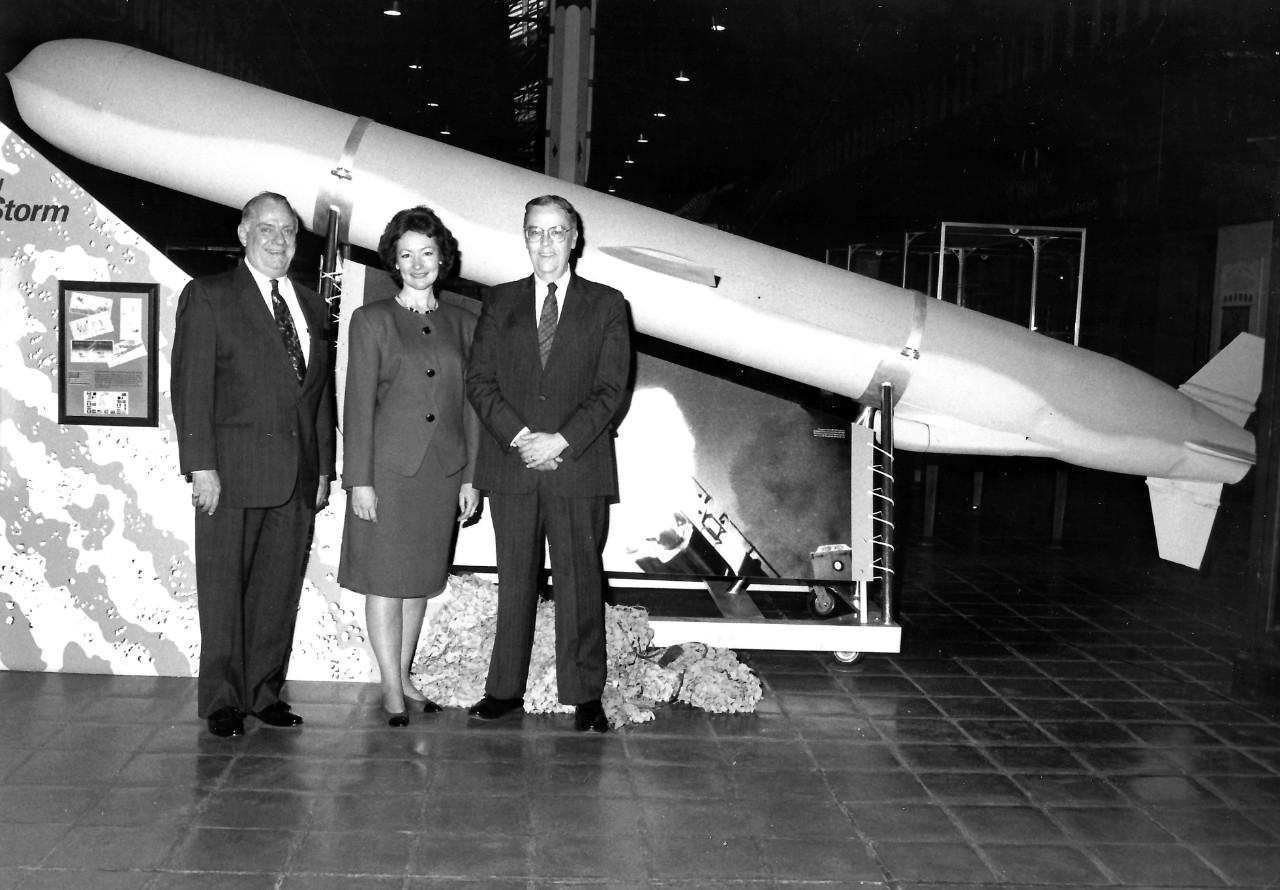
NMUSN-69: Presentation of Tomahawk Land Attack Missile, January 26, 1993. A presentation was held at the Navy Museum (now National Museum of the U.S. Navy) on the acceptance for display purposes. From left to right: Dr. Dean Allard, Director of the Naval Historical Center (now Naval History and Heritage Command), Mrs. Clauda Pennington, Acting Director of the Navy Museum, and Mr. Ski Kowalskey, who was a team member responsible for the Tomahawk mock-up. National Museum of the U.S. Navy Photograph Collection.
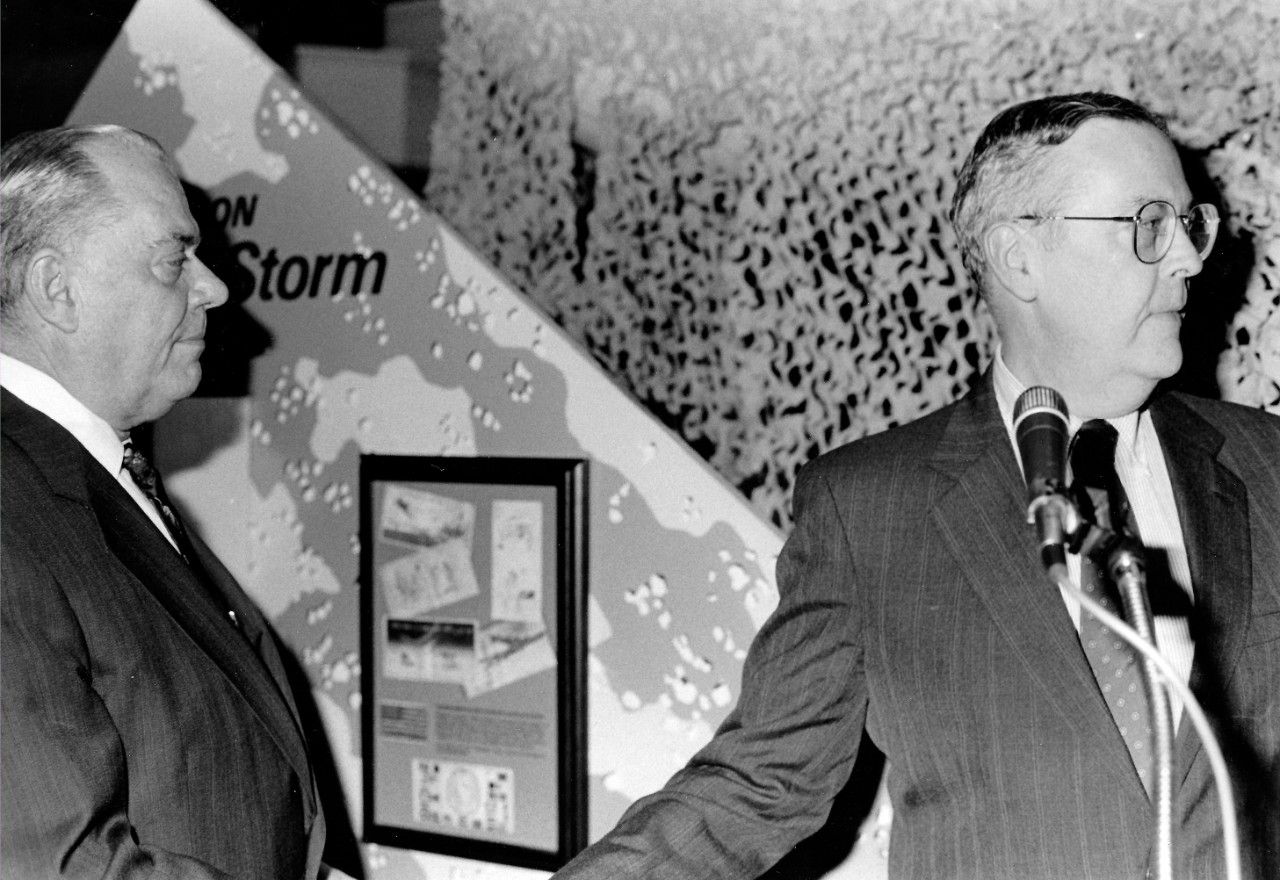
NMUSN-71: Presentation of Tomahawk Land Attack Missile, January 26, 1993. A presentation was held at the Navy Museum (now National Museum of the U.S. Navy) on the acceptance for display purposes. From left to right: Dr. Dean Allard, Director of the Naval Historical Center (now Naval History and Heritage Command) and Mr. Ski Kowalskey, a member of the team responsible for the Tomahawk mock-up. National Museum of the U.S. Navy Photograph Collection.
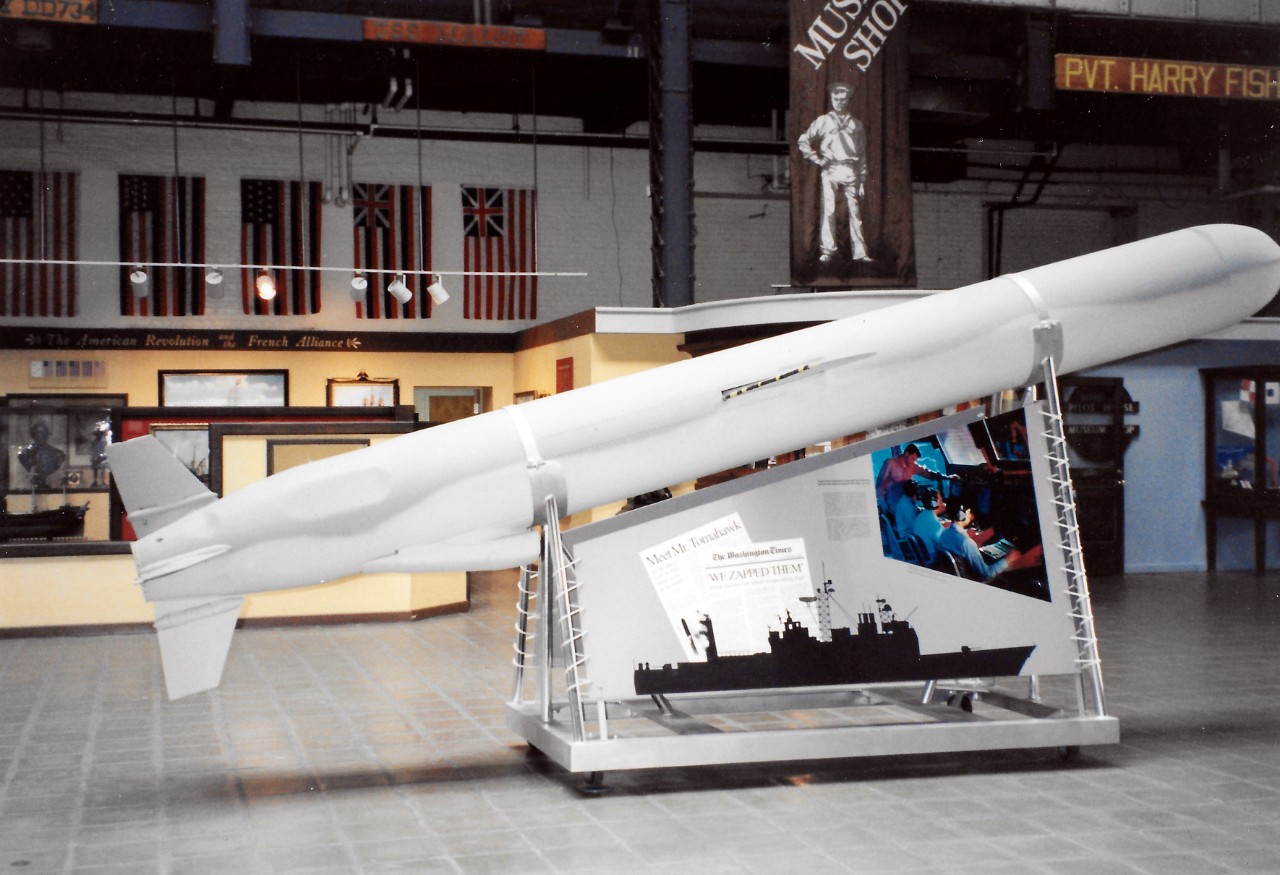
NMUSN-72: Presentation of Tomahawk Land Attack Missile, January 26, 1993. A presentation was held at the Navy Museum (now National Museum of the U.S. Navy) on the acceptance for display purposes. Image shows the Tomahawk on display in Bldg. 76. National Museum of the U.S. Navy Photograph Collection.
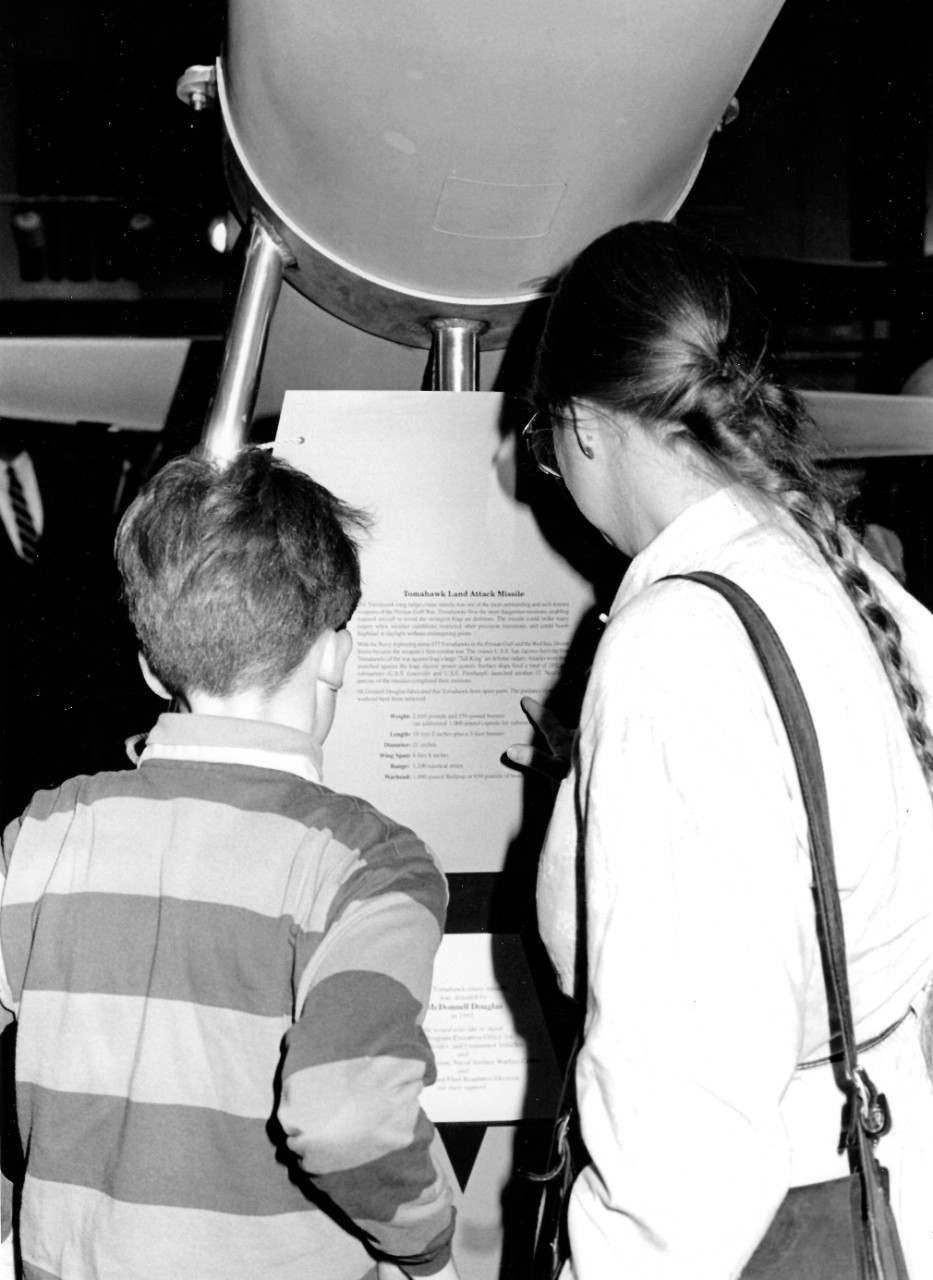
NMUSN-70: Visitors view the Tomahawk Land Attack Missile, January 26, 1993. Presentation was held at the Navy Museum (now National Museum of the U.S. Navy) on the acceptance for display purposes. National Museum of the U.S. Navy Photograph Collection.
Tomahawk Land Attack Missile
The Tomahawk long-range cruise missile was one of the most outstanding and well-known weapons of the Persian Gulf War. Tomahawks flew the most dangerous missions, enabling manned aircraft to avoid the strongest Iraqi air defenses. The missile could strike any target when weather conditions restricted other precision munitions, and could bomb Baghdad in daylight without endangering pilots.
With the Navy deploying some 477 Tomahawks in the Persian Gulf and the Red Sea, Desert Storm became the weapon’s first combat test. The cruiser USS San Jacinto (CG-56) fired the first Tomahawks of the war against Iraq’s large “Tall King” air defense radars. Attacks were then launched against the Iraqi electric power system. Surface ships fired a total of 285, and submarines USS Louisville (SSN-724) and USS Pittsburgh (SSN-720), launched another 12. Nearly 90 percent of the missiles completed their missions.
McDonnell Douglas fabricated this Tomahawk from spare parts. The guidance system and warhead have been removed.
| Weight: | 2,650 pounds and 550-pound booster |
| Length: | 18 feet, 2 inches, plus a 2-foot booster |
| Diameter: | 21 inches |
| Wing Span: | 8 feet, 8 inches |
| Range: | 1,200 nautical miles |
| Warhead: | 1,000 pound Bullpup or 650 pounds of bomblets |
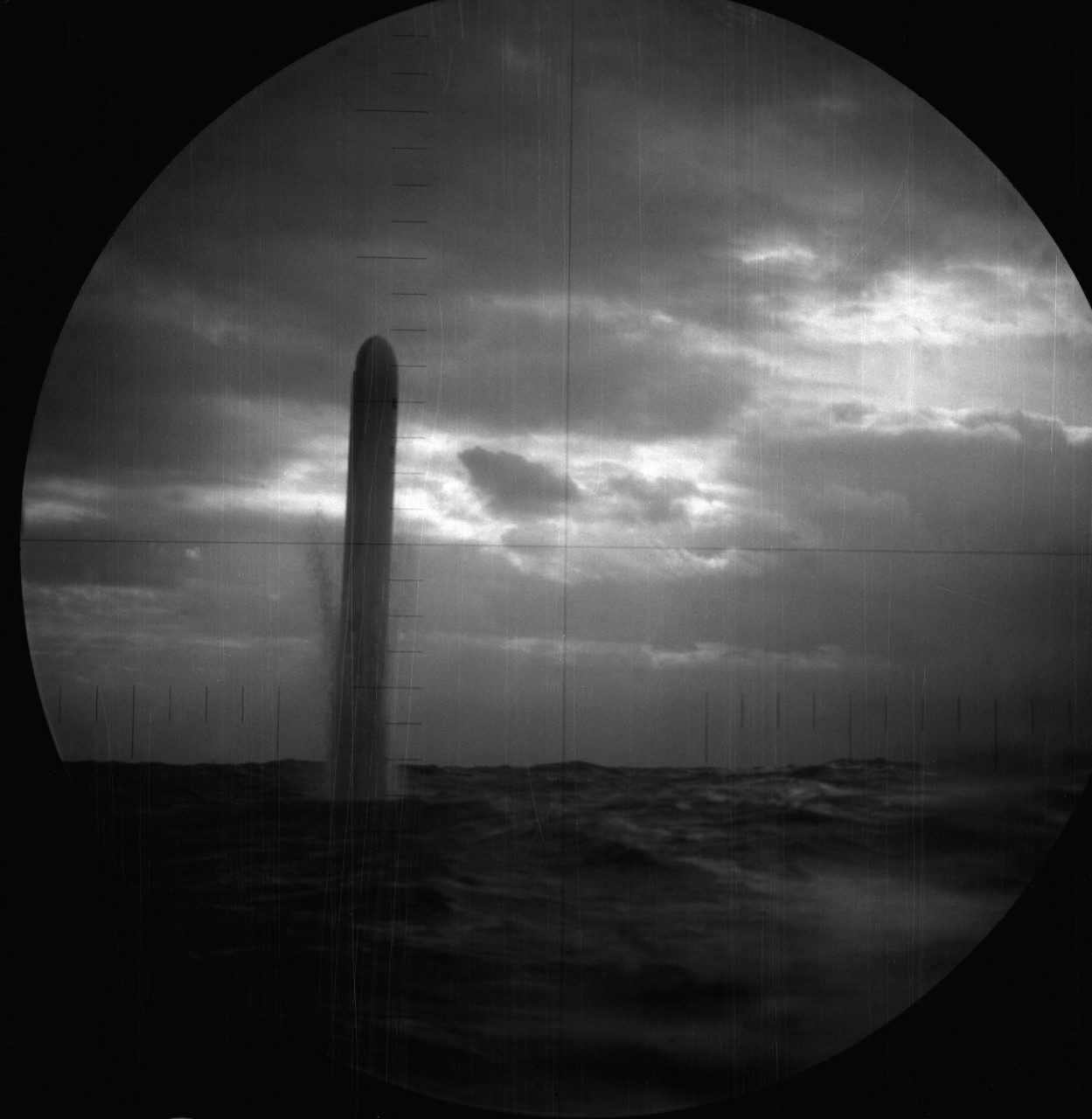
330-CFD-DN-SN-91-08884: BGM-109 Tomahawk land attack missile (TLAM), Operation Desert Storm, 1991. As seen through USS Pittsburgh’s (SSN-720) periscope and targeted on an Iraqi position. It begins to leave the water following a vertical launch tube onboard the nuclear-powered attack submarine. Official U.S. Navy Photograph, now in the collections of the National Archives.
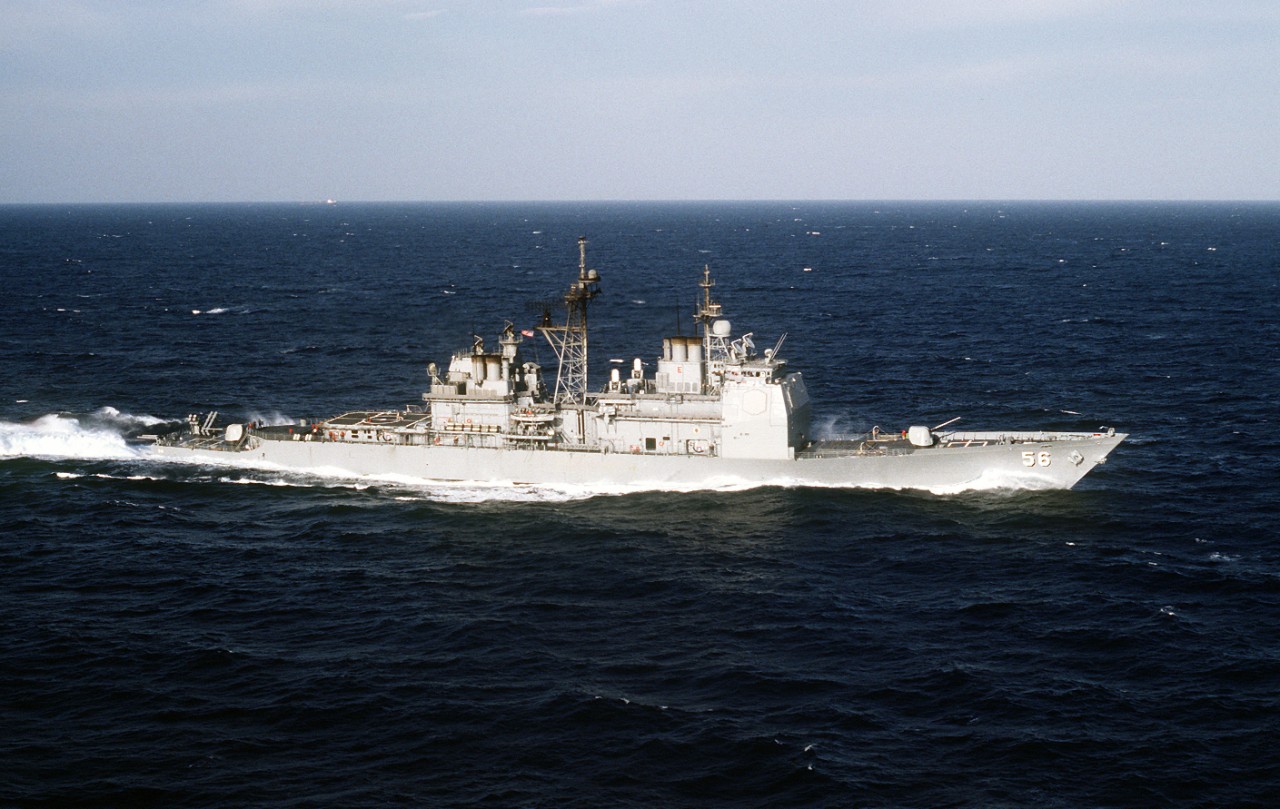
330-CFD-DN-ST-91-05584: USS San Jacinto (CG-56), Operation Desert Storm, 1991. Starboard view of the guided missile cruiser as it moves into position for an underway replenishment, February 1, 1991. Official U.S. Navy Photograph, now in the collections of the National Archives.



